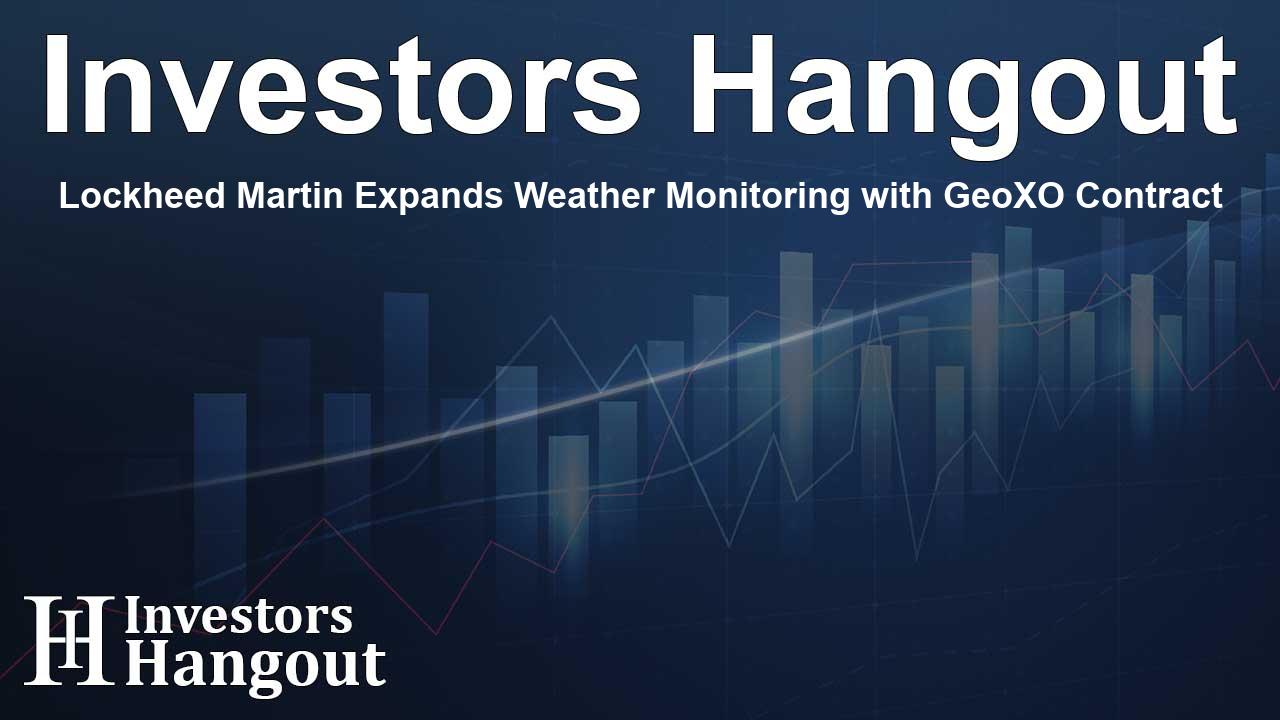Lockheed Martin Expands Weather Monitoring with GeoXO Contract

Lockheed Martin's New GeoXO Lightning Mapper Contract
Lockheed Martin (NYSE: LMT) has recently been awarded a significant contract to create the GeoXO Lightning Mapper (LMX) under the direction of NASA for the National Oceanic and Atmospheric Administration (NOAA). This new and advanced lightning detection system will be instrumental in improving weather forecasting and severe weather monitoring for meteorologists and disaster preparedness teams across the nation.
Enhancing NOAA's Weather Satellites
The GeoXO Lightning Mapper is designed to enhance NOAA's next-generation weather satellite capabilities. With an estimated baseline contract value of about $297 million, the initiative covers the development of two LMX instruments, with provisions for producing two additional units. This investment not only reflects Lockheed Martin's commitment to technological innovation but also demonstrates the importance of accurate weather monitoring in today's unpredictable climate scenarios.
What is the GeoXO Lightning Mapper?
The LMX is a single-channel, near-infrared optical instrument tailored to detect, locate, and quantify lightning flashes in almost real-time. The integration of this sophisticated instrument into NOAA's GeoXO weather satellites will ensure accurate and continuous monitoring of severe weather phenomena.
Applications of the LMX Technology
The data generated by the LMX will provide continuous monitoring of severe weather events, improving analysis and prediction capabilities. Key aspects of this technology include its ability to enhance hurricane intensity assessments, identify lightning hazards, detect potential wildfire ignition sources, and help in aviation threat management. With these significant benefits, meteorologists will have the tools necessary to provide timely warnings and extend lead times for storm alerts.
Building on Previous Achievements
The LMX builds upon the success of the original Geostationary Lightning Mapper (GLM). By implementing improvements like better spatial resolution, faster imaging, and a broader field of view, including areas as far north as Alaska, this new instrument elevates the efficacy of lightning detection systems. This comprehensive monitoring system enables vital insights into various severe weather phenomena, essential for effective public safety measures.
Lockheed Martin's Role in Advancing Weather Technology
Lockheed Martin's success in the field of weather monitoring spans over 50 years, during which it has built more than 120 weather and environmental spacecraft, and developed various Earth observation instruments for military and commercial applications. The company's extensive experience solidifies its status as a leader in crafting innovative solutions that cater to the evolving needs of weather enthusiasts and professionals.
The Future of Weather Monitoring
As it stands, NOAA's GeoXO weather satellite program is an exciting evolution beyond the previous Geostationary Operational Environmental Satellites (GOES). The latest satellite in the GOES series was launched recently, and the scheduling of three additional spacecraft under the new $2.27 billion contract reflects the growing necessity for enhanced weather monitoring systems. The first launch of these satellites is expected to occur in the early 2030s, paving the way for new advancements in weather analysis.
Lockheed Martin's Vision and Commitment
Lockheed Martin maintains a steadfast commitment to innovation and scientific exploration. The company's mission not only underscores its role in providing sophisticated technology but also its dedication to ensuring safety through advanced weather forecasting models. By developing the LMX instruments, the aim is to empower meteorologists to respond more effectively to severe weather conditions, enhancing public safety overall.
Frequently Asked Questions
What is the GeoXO Lightning Mapper?
The GeoXO Lightning Mapper (LMX) is a cutting-edge instrument being developed by Lockheed Martin to detect and analyze lightning events in near-real-time, significantly enhancing weather forecasting.
Why is the LMX important for weather forecasts?
The LMX improves storm analysis and prediction, providing crucial data that aids in the detection of severe storms, hurricanes, and other hazardous weather conditions.
How does the LMX enhance existing technology?
It offers finer spatial resolution, quicker imaging, and a wider field of view than the Geostationary Lightning Mapper, making it more effective at monitoring weather across a larger area.
What kind of contract has Lockheed Martin received?
Lockheed Martin has been awarded a baseline contract valued at approximately $297 million to develop two LMX instruments, with options for additional units.
When is the first launch of the GeoXO satellites planned?
The first launch of the new GeoXO satellites is expected in the early 2030s as part of NOAA's advanced weather monitoring program.
About The Author
Contact Thomas Cooper privately here. Or send an email with ATTN: Thomas Cooper as the subject to contact@investorshangout.com.
About Investors Hangout
Investors Hangout is a leading online stock forum for financial discussion and learning, offering a wide range of free tools and resources. It draws in traders of all levels, who exchange market knowledge, investigate trading tactics, and keep an eye on industry developments in real time. Featuring financial articles, stock message boards, quotes, charts, company profiles, and live news updates. Through cooperative learning and a wealth of informational resources, it helps users from novices creating their first portfolios to experts honing their techniques. Join Investors Hangout today: https://investorshangout.com/
The content of this article is based on factual, publicly available information and does not represent legal, financial, or investment advice. Investors Hangout does not offer financial advice, and the author is not a licensed financial advisor. Consult a qualified advisor before making any financial or investment decisions based on this article. This article should not be considered advice to purchase, sell, or hold any securities or other investments. If any of the material provided here is inaccurate, please contact us for corrections.
